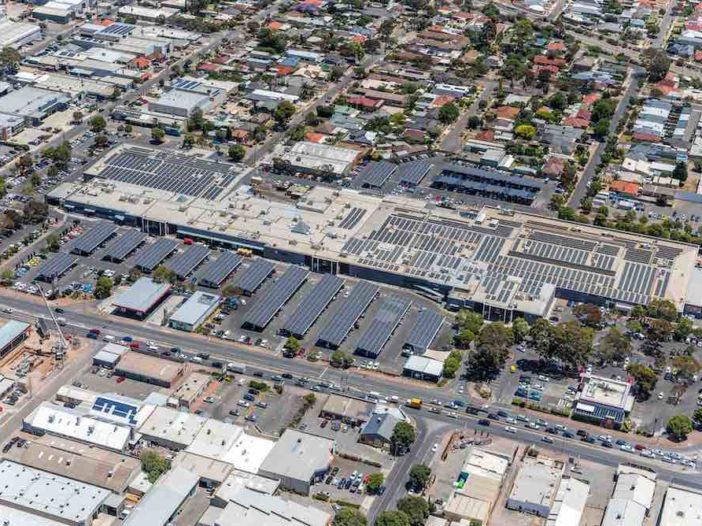
Battery energy storage systems with a combined storage capacity of 5MWh will be installed across two shopping centres, one in Victoria and one in New South Wales, in a bid to maximise the facilities’ solar savings and minimise costly grid power consumption.
The pilot program is a joint effort between energy forward retail property group Vicinity Centres and Enel X, a specialist in the use of solar and battery based virtual power plants to displace high-priced fossil fuel generation.
The pilot will see Enel X operate and optimise the demand management and battery systems, while Vicinity manages the engineering, procurement and construction process and provides access to its infrastructure, including already installed solar systems.
Work has started on the two battery systems at Vicinity’s Broadmeadows Central in Victoria, and Lake Haven Centre in New South Wales, and is due for completion by mid-2023.
Enel X Australia’s head of energy storage, Matt Schultz, says the pilot aims to help Vicinity reduce energy costs by optimising the batteries’ charge and discharge strategy using Enel’s proprietary optimisation software, DER.OS.
“The batteries will store excess renewable energy when spot electricity prices are low or negative and will generate when the local network is peaking, and prices are high,” Schultz says.
“[Virtual power plant] integration will introduce new revenue streams, such as frequency support… which helps to stabilise the grid.”
Schultz says that following the first two battery projects, there will be an opportunity to expand across other centres, with the potential to deploy more than 50MWh of battery storage across Vicinity’s portfolio.
“If successful the JV could unlock a substantial battery program distributed on their sites across the country, to support the energy transition,” Schultz said in comments on LinkedIn.
On Vicinity’s side of the equation, the pilot with Enel X adds to an impressive list of energy innovations spearheaded by the group as it seeks to cut costs and meet its own sustainability targets.
This has included a major solar and battery roll-out kicked off in 2018 that spanned five states, 17 shopping centres, and aimed to cut overall grid power usage by 40%.
Also in 2018, Vicinity Centres became one of the nation’s first property companies to trial the blockchain-based technology of Power Ledger, in a separate effort to help maximise solar self-consumption and minimise grid power usage.
In its end of 2022 sustainability update, the company noted it was tracking well to meet its net zero carbon by 2030 target, having reduced its energy intensity by 27% and carbon intensity by 38% since FY16.
“This was supported by our industry-leading solar program, which now includes 32.85MW of solar capacity across 22 centres,” the report says, including 1.55MW at Chadstone in Victoria, 0.92MW at The Glen, also in Victoria, and 0.78MW at Nepean Village in NSW.
In a statement this week, Vicinity Centre’s chief information and innovation officer Justin Mills says the collaboration with Enel X will continue to drive the company’s strategy of making the most of its existing solar assets.
“The batteries will support green energy use and the electricity grid,” says Mills. “Vicinity’s Energy Team has worked tirelessly on this trial and our integrated energy strategy over the last five years.”
Jamie Catt, an electricity market participation strategy specialist at Enel X, says kudos should go to Vicinity Centres for continuing to strive for greener and more efficient energy solutions.
“Businesses with integrated energy strategies that consider where their energy comes from, how they procure it, what they do with it and when they consume it are the organisations both leading the energy transition as well as delivering commercial outcomes for their stakeholders,” Catt said on LinkedIn this week.

Sophie is editor of One Step Off The Grid and deputy editor of its sister site, Renew Economy. Sophie has been writing about clean energy for more than a decade.



